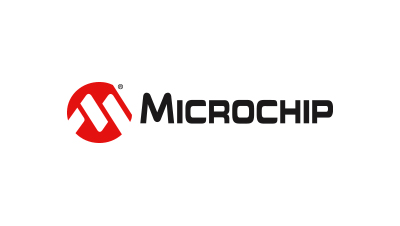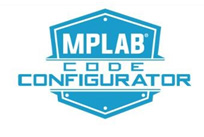Embedded to Cloud Journey with PIC® and AVR® MCUs in the Microchip ecosystem
Microchip's PIC® and AVR® microcontrollers (MCUs) help you easily bring your ideas to life, no matter your skill level. Select from the industry's broadest portfolio of uniquely configurable MCUs and start designing quickly using our award-winning integrated development environments. With their Core Independent Peripherals, production-ready code generation tools and best-in-class rapid prototyping hardware, PIC and AVR MCUs make it easy to build whatever your heart desires.

Discover Solutions with the Webinar Series:
- Start your Embedded to Cloud Journey with IoT-focused hardware and software solutions
- Modernize your development workflow with the MPLAB development ecosystem and our Curiosity Nano development boards
- Build complex embedded control functions with on-chip Core Independent Peripherals & Intelligent Analog

Microchip: Modernize your Development Workflow with the MPLAB Development Ecosystem and our Curiosity Nano Development Boards
Microchip has many tools that work together to assist and accelerate your product development time. We will explore tools such as our Curiosity Nano Development Boards, MPLAB X, MPLAB Code Configurator (MCC) and XC Compilers and how they work together to generate code quickly and efficiently.

Microchip: Build Complex Embedded Control Functions with on-chip CIPs & Intelligent Analog
In this webinar, we will cover key digital and analog peripherals and show how easy it is to work with them and combine them to do tasks that run independently of the CPU.

Microchip: Embedded to Cloud Journey with IoT-focused Hardware and Software Solutions
Join us as we take you on a journey from writing embedded code that will connect to the cloud. We will explore Microchip’s PIC and AVR-IoT platform and show how you can rapidly connect to the cloud within a few minutes from opening the box.
- Embedded to Cloud
- MPLAB Ecosystem
- Core Independent Peripherals and Intelligent Analog
Jump out of the box and into the Cloud effortlessly with our IoT-focused hardware and software solutions. Microchip's embedded to Cloud ecosystem is there for developers every step of the way, offering multiple development kits with a wide variety of Cloud partners in addition to industry leading Integrated Development Environments (IDEs) ensuring you have all the resources you need to bring your creativity to life.
From the initial spark of inspiration all the way to mass production Microchip offers support to all levels of developers, designers, and DIY-ers alike. From scoping out your idea with one of our many Curiosity Nano development boards which easily and effortlessly interfaces with a whole host of sensors, to carefully dodging feature creep with our award-winning and industry leading Integrated Development Environments (IDEs) which offer users an easy to use alternative that streamlines the code writing process, Microchip's embedded to Cloud ecosystem is there to support at any stage of the design process.
AVR-IoT WG Development Board - AC16416
The AVR-IoT WG development board combines a powerful ATmega4808 AVR® MCU, an ATECC608A CryptoAuthentication™ secure element IC and the fully certified ATWINC1510 Wi-Fi® network controller - which provides the most simple and effective way to connect your embedded application to Google’s Cloud IoT core platform. The board also includes an on-board debugger, and requires no external hardware to program and debug the MCU.
PIC-IoT WA Development Board - EV54Y39A
The PIC-IoT WA Development Board combines a powerful PIC24FJ128GA705 MCU, an ATECC608A CryptoAuthentication™ secure element IC and the fully-certified ATWINC1510 Wi-Fi® network controller - which provides the most simple and effective way to connect your embedded application to Amazon Web Services (AWS). The board also includes an on-board debugger, and requires no external hardware to program and debug the MCU.
Microchip’s development platforms combine easy, integrated search and discovery of example code, graphical configuration of projects and code debugging in a collaborative environment. Combine this with the Curiosity Nano Development Boards to bring your ideas to market faster. This environment enables enterprise-scale rapid development while simplifying software design for users at all skill levels with an intuitive browser-based interface and cloud connectivity.
Microchip’s MPLAB ecosystem incorporates three powerful components designed to modernize the development workflow for PIC and AVR microcontrollers. Users can easily find fully-configured and complete source code, projects, examples and software applications using the intuitive catalog in MPLAB Discover. Selected code and projects instantly populate in MPLAB Xpress IDE for further development.
MPLAB Code Configurator, with its easy-to-use graphical configuration, offers point-and-click options to set up hardware peripherals and further configure projects. Device setup is simplified with optimized peripheral libraries, modular downloads and updates. Developing, debugging and deploying project applications directly from any web browser can be completed without any software installation. Our Curiosity Nano boards feature a variety of 8-bit PIC® and AVR® microcontrollers (MCUs), 16-bit PIC MCUs and 32-bit Arm® Cortex® core-based SAM MCUs, allowing you to easily evaluate different architectures for your design.

MPLAB® X Integrated Development Environment (IDE) is an expandable, highly configurable software program that incorporates powerful tools to help you discover, configure, develop, debug and qualify embedded designs for most of Microchip’s microcontrollers and digital signal controllers. MPLAB X IDE works seamlessly with the MPLAB development ecosystem of software and tools, many of which are completely free.

MPLAB® Code Configurator (MCC) is a free, graphical programming environment that generates seamless, easy-to-understand C code to be inserted into your project. Using an intuitive interface, it enables and configures a rich set of peripherals and functions specific to your application. It supports thousands of PIC® & AVR microcontrollers. MCC is incorporated into both the downloadable MPLAB X Integrated Development Environment (IDE) and the cloud-based MPLAB Xpress IDE.

Nano boards feature a variety of 8-bit PIC® and AVR® microcontrollers (MCUs), 16-bit PIC MCUs and 32-bit Arm® Cortex® core-based SAM MCUs, allowing you to easily evaluate different architectures for your design. They also offer full programming and debugging capabilities to support you throughout your development process. Each Curiosity Nano board is compatible with the Curiosity Nano Base for Click boards. This base includes a socket that fits all Curiosity Nano boards plus three mikroBUS™ sockets and an Xplained Pro socket that will enable you to effortlessly expand your design with sensors, connectivity modules and more. As an incredibly adaptable toolset for taking your project from exploration to working prototype, the Curiosity Nano Development Platform will be a welcome addition to your design team.
Microchip’s Core Independent Peripherals (CIPs) are designed to implement a variety of functions and applications that don’t need constant interaction with the Central Processing Unit (CPU). Because CIPs can enable many simultaneous functions in a single MCU, you can use a smaller and less expensive device to implement complex control systems and create innovative designs. These blocks of configurable hardware intelligence require little to no code, consume minimal power and are much smaller than the RAM or Flash needed to implement the same functions in software.
Core Independent Peripherals (CIPs) are peripherals that have been designed with additional capabilities to handle a variety of tasks without the need for intervention from the Central Processing Unit (CPU). Any time the CPU is needed to make a change to the embedded system (or handle a task of some sort), it will rely on instructions that you have written and will then be downloaded into the microcontroller’s program memory to tell the CPU exactly what to do.
CIPs automatically maintain some tasks within the system freeing the CPU to simply supervise the system, handle some other task in parallel or go into a lower power mode.
Microchip Core Independent Peripherals include:
- Sensor Interfacing & Signal Conditioning with Intelligent Analog
- PWM Drive & Waveform Generation with Waveform Control
- Signal measurements with timing & counter control with the advanced Timing and Measurements peripherals
- Customizable Logic and Math functions
- Hardware monitor and fault detection with the Safety and Monitoring peripheral
- Wired, wireless and encrypted Communications
- User Interface peripheral for capacitive touch sensing and LCD control and XLP and System Flexibility
Benefits of the CIPs include the following:
- Self-sustaining: Once initialized in a system, CIPs can provide steady-state closed-loop embedded control with zero intervention from the MCU’s core. The CPU can then be idled or put into SLEEP mode to save system power.
- Free Up the CPU: CIPs are smartly interconnected to allow near-zero latency sharing of data, logic inputs or analog signals without additional code or interrupting the CPU. This frees the CPU to perform other system tasks and reduces Flash memory consumption.
- Significant savings: By taking the load off the CPU, CIPs allow smaller, lower-power PIC MCUs to perform extremely complex tasks, such as high-power lighting control and communication. They replace off-board discrete components to reduce your BOM costs.
Related videos
Analog Product Selector
Microchip's broad portfolio of standalone analog and interface devices offers highly inte-grated solutions that combine various analog functions.
Reimagine Your Design
Curiosity Development Platform Simplified
EBV Design Hub
Browse and review hundreds of proven reference designs to accelerate your design process. Our designs can be modified and saved in our AVAIL design tool and then exported to your CAD tool of choice.


